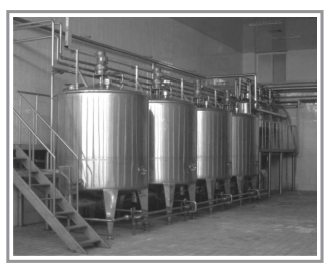$$ \text { Match the following columns. } $$
| Column I | Column II | ||
|---|---|---|---|
| A. | Lady bird | 1. | Methanobacterium |
| B. | Mycorrhiza | 2. | Trichoderma |
| C. | Biological control | 3. | Aphids |
| D. | Biogas | 4. | Glomus |
Codes
A B C D
$2 \quad 4 \quad 3 \quad 1$
Codes
A B C D
$3 \quad 4 \quad 2 \quad 1$Codes
A B C D
$\begin{array}{llll}\text { } 4 & 1 & 2 & 3\end{array}$
Codes
$3 \quad 2 \quad 1 \quad 4$
$$ \text { Why does 'Swiss cheese' have big holes? } $$
The large holes in 'Swiss cheese' are due to production of a large amount of $\mathrm{CO}_2$ by a bacterium named Propionibacterium sharmanii.
What are fermentors?
For large scale production of biotechnological products, e.g., antibiotics, beverages) in industries, microbes are grown in very large vessels called fermentors or bioreactors.
 $$ \text { Fermentors } $$
$$ \text { Fermentors } $$
Name a microbe used for statin production. How do statins lower blood cholesterol level?
Statins are bioactive molecules, produced by the yeast Monascus purpureus. These bioactive molecules have been commercialised as blood-cholesterol lowering agents. It acts by competitively inhibiting the enzyme responsible for synthesis of cholesterol.
Why do we prefer to call secondary waste water treatment as biological treatment?
Secondary waste water treatment is called biological treatment because microorganisms are involved in the breakdown of organic matter in this phase of waste water treatment.
The primary effluent is passed into large aeration tanks where the organic matter in it is consumed by aerobic microbes which are later themselves digested by anaerobic bacteria and fungi in anaerobic sludge digesters.